Damien Fourure
DAEMA: Denoising Autoencoder with Mask Attention
Jun 30, 2021
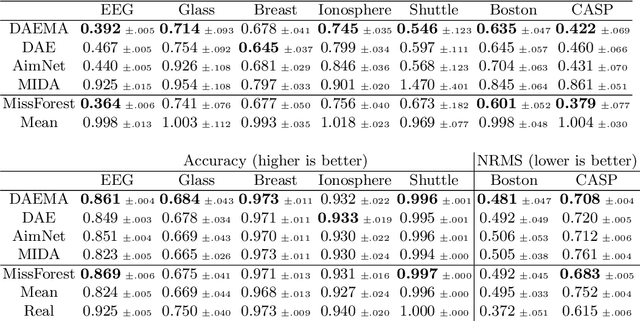
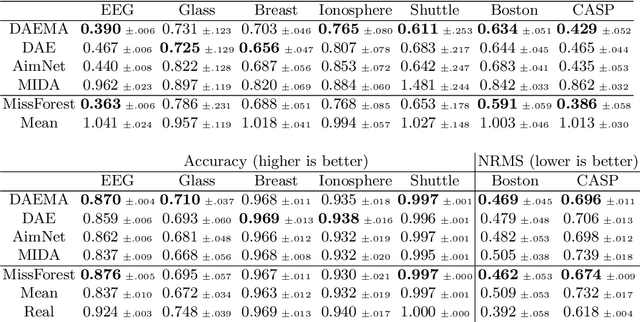

Abstract:Missing data is a recurrent and challenging problem, especially when using machine learning algorithms for real-world applications. For this reason, missing data imputation has become an active research area, in which recent deep learning approaches have achieved state-of-the-art results. We propose DAEMA (Denoising Autoencoder with Mask Attention), an algorithm based on a denoising autoencoder architecture with an attention mechanism. While most imputation algorithms use incomplete inputs as they would use complete data - up to basic preprocessing (e.g. mean imputation) - DAEMA leverages a mask-based attention mechanism to focus on the observed values of its inputs. We evaluate DAEMA both in terms of reconstruction capabilities and downstream prediction and show that it achieves superior performance to state-of-the-art algorithms on several publicly available real-world datasets under various missingness settings.
Anomaly Detection: How to Artificially Increase your F1-Score with a Biased Evaluation Protocol
Jun 30, 2021
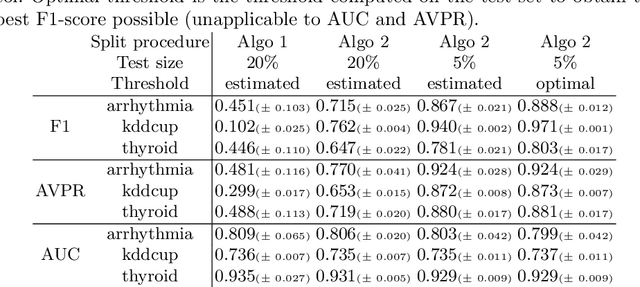

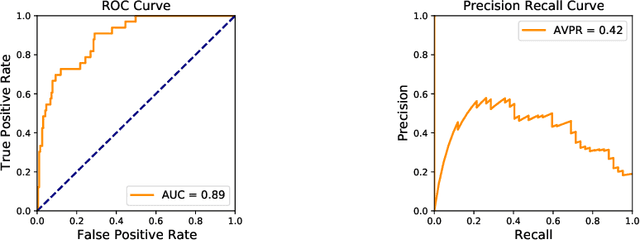
Abstract:Anomaly detection is a widely explored domain in machine learning. Many models are proposed in the literature, and compared through different metrics measured on various datasets. The most popular metrics used to compare performances are F1-score, AUC and AVPR. In this paper, we show that F1-score and AVPR are highly sensitive to the contamination rate. One consequence is that it is possible to artificially increase their values by modifying the train-test split procedure. This leads to misleading comparisons between algorithms in the literature, especially when the evaluation protocol is not well detailed. Moreover, we show that the F1-score and the AVPR cannot be used to compare performances on different datasets as they do not reflect the intrinsic difficulty of modeling such data. Based on these observations, we claim that F1-score and AVPR should not be used as metrics for anomaly detection. We recommend a generic evaluation procedure for unsupervised anomaly detection, including the use of other metrics such as the AUC, which are more robust to arbitrary choices in the evaluation protocol.
Residual Conv-Deconv Grid Network for Semantic Segmentation
Jul 26, 2017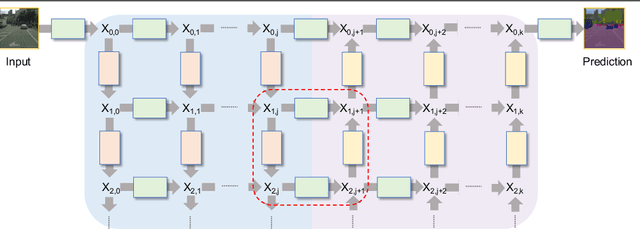

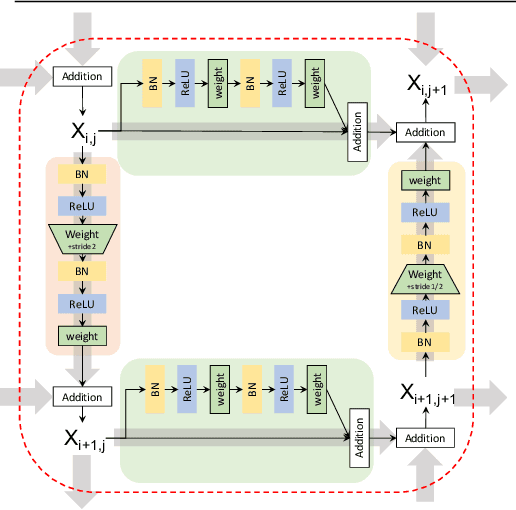

Abstract:This paper presents GridNet, a new Convolutional Neural Network (CNN) architecture for semantic image segmentation (full scene labelling). Classical neural networks are implemented as one stream from the input to the output with subsampling operators applied in the stream in order to reduce the feature maps size and to increase the receptive field for the final prediction. However, for semantic image segmentation, where the task consists in providing a semantic class to each pixel of an image, feature maps reduction is harmful because it leads to a resolution loss in the output prediction. To tackle this problem, our GridNet follows a grid pattern allowing multiple interconnected streams to work at different resolutions. We show that our network generalizes many well known networks such as conv-deconv, residual or U-Net networks. GridNet is trained from scratch and achieves competitive results on the Cityscapes dataset.
 Add to Chrome
Add to Chrome Add to Firefox
Add to Firefox Add to Edge
Add to Edge